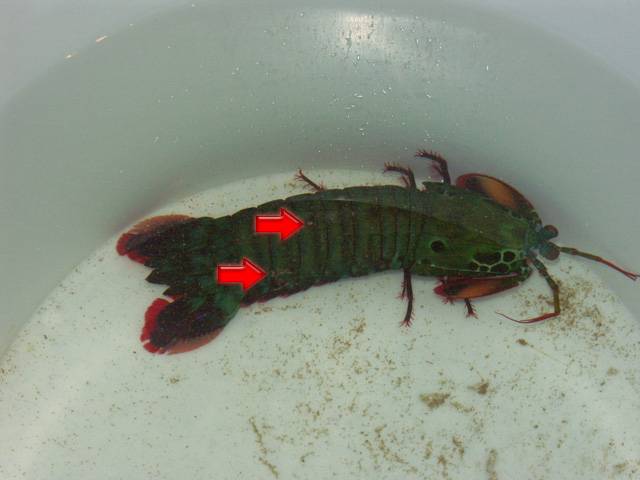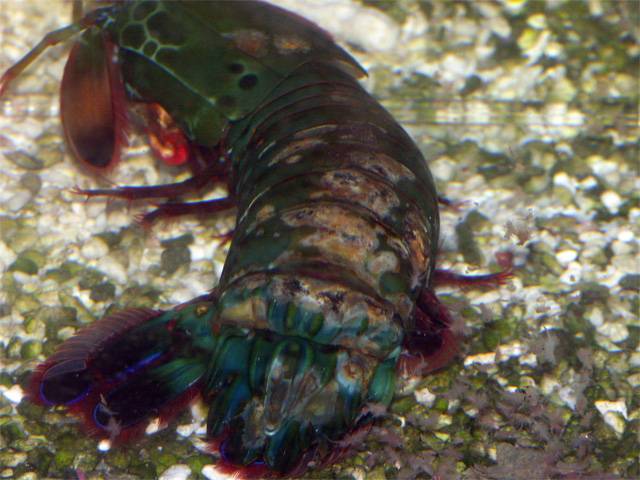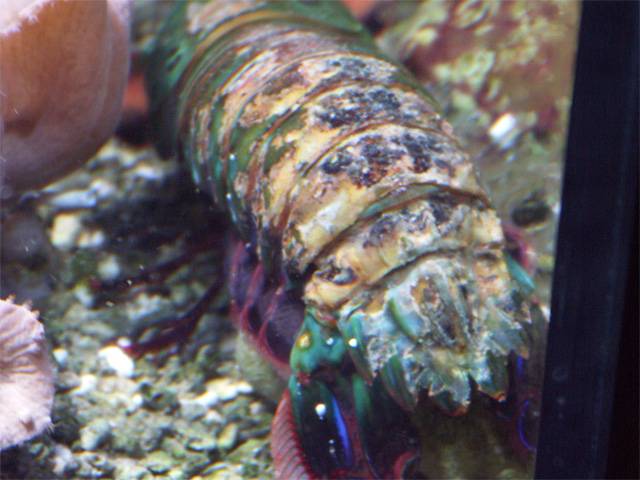

|
|
|
#1
|
|||
|
|||
|
The beginning and the end of shell disease!
Hello, today i have some terrible photos that shows the beginning and the end of shell disease. I hope this pics can help you to detect shell disease.
Only in a early stadium there is something that you can do for the animal. Beginning of shell disease  4 month later.  4 weeks later.  The mantis died 2 weeks later . |
|
#2
|
|||
|
|||
|
god, that was terrible! Im sorry for your loss.
|
|
#3
|
|||
|
|||
|
Is there any way to help help prevent shell disease? It seems that most large peacocks end up getting it eventually. Is it size of tank, intensity of light, diet, etc.
|
|
#4
|
|||
|
|||
|
adult males are most susceptible. It is not uncommon for peacocks to get it. The trick is to get them to molt before it gets serious. Several factors can cause shell rot. These include intense light, malnutrition, stress, bad water conditions, shell rot in the tank (Its a good idea to remover the old shell after the molt if it had shell rot) And a number of other things, most of which we probly dont have control of.
Edit: Dr. Roy once suggested in the most dire cases to treat with malachite green dips, but this is untested and dangerous so it coud very well be lethal.
__________________
This laughter is ill-informed! "Sanity? What would I do with something as useless as that?" -Kennpachi |
|
#5
|
|||
|
|||
|
I have stressed over the years the need for good water quality (including very low nitrate levels), a dark suitable burrow, good diet and the one thing that you forgot, uv sterilization. UV treatment of the water may not cure shell disease, but it will slow it down and keep it from spreading to future animals kept in the same tank.
Roy |
|
#6
|
|||
|
|||
|
Dr. Roy, I am planning on hooking up several mantis tanks into one large plumbed system with a twenty gallon for my ciliata, a ten gallon for an N. Oerstedi, N wennerae or G. smithii, and one or more ten gallons to hold feeder items (live shrimp, fish snails etc.) and as a sump. And even farther into the future adding a 30 gallon for a peacock. Would it be a bad idea to plumb a peacock into the system because of the danger of shell rot spreading?
__________________
This laughter is ill-informed! "Sanity? What would I do with something as useless as that?" -Kennpachi |
|
#7
|
|||
|
|||
|
like Dr. Roy was stating the key for animals not getting shell disease is keeping the water clean, i have an over sized skimmer, im constantly running purigen and carbon, and i do water changes once every few weeks to a month at the most and my peacock is doing great, she is healthy and actually its nice to see her actively hunting in the aquarium again
|
|
#8
|
|||
|
|||
|
When I got my P. Ciliata it had some shell rot ( i posted right before i bought it). It molted, and seemed to shed all of the shell rot. I removed 90% of the old molt shell, and now I can see some shell disease coming back. Its not as bad as it was before, but getting there.
These pictures kinda scared me. Ive never seen pictures of it that bad. I really hope my mantis can molt it away again for good. |
|
#9
|
|||
|
|||
|
Shell disease is an acute problem in only a few species and then typically only in large animals that molt less frequently. It is particularly bad in O. scyllarus, Hemisquilla californiensis and Gonodactylaceus ternatensis. I have seen it in Gonodactylus chiragra, but only in the biggest animals. I actually have never seen true shell disease in P. ciliata or N. wennerae.
I would suggest that in sysems that are all plumbed off of a common water supply that you use uv filtration as well as a protein skimmer. Roy |
|
|